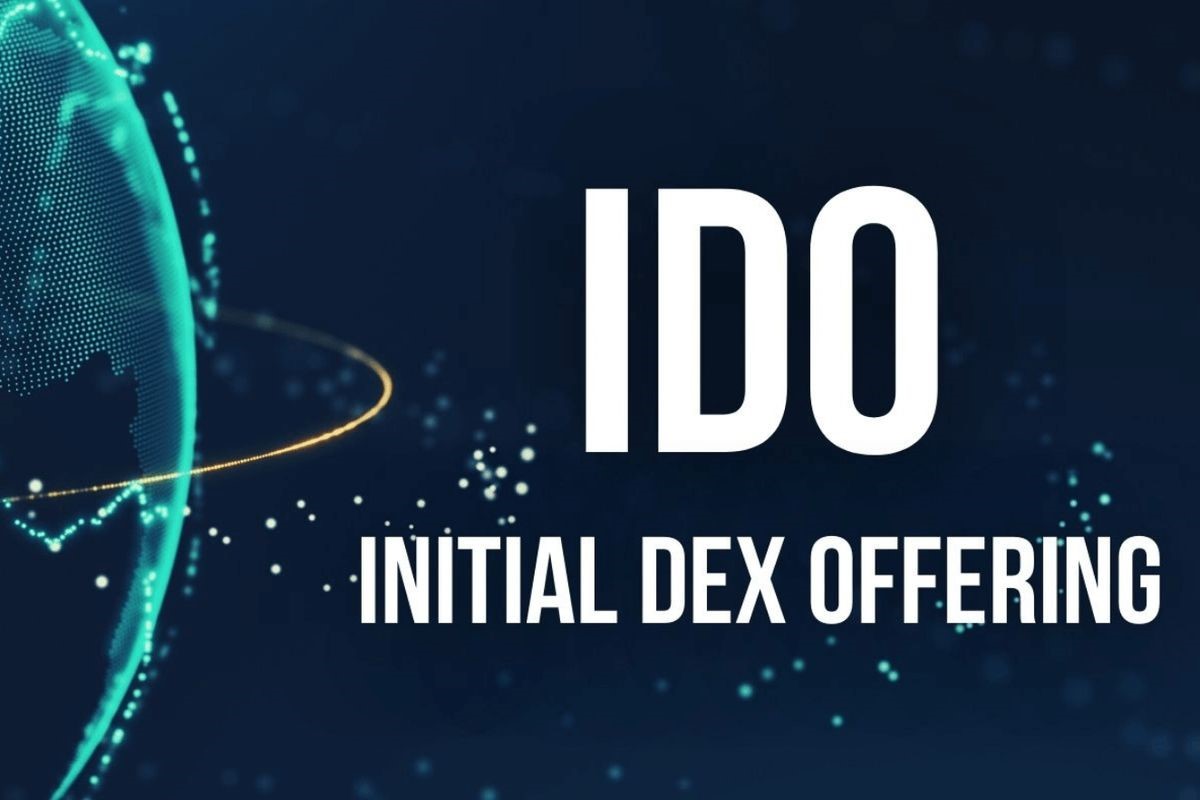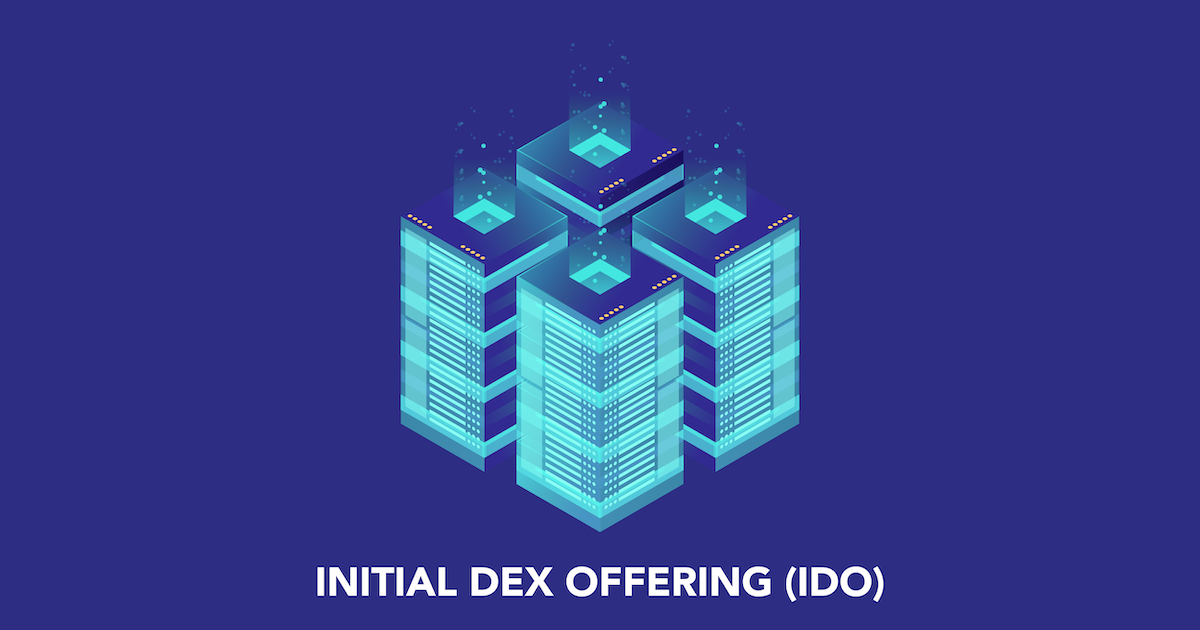Initial DEX Offerings (IDOs) are becoming a hotly debated topic in the crypto space. The cryptocurrency community has been mainly creative when it comes to finding new ways to bootstrap projects and raise funds.
In late 2017 and 2018, there was the appearance of initial coin offerings (ICOs), where the teams would raise money through the sale of a part of their total token supply to the public. This strategy resulted in a great euphoria as the freshly minted coins would multiply in value after they get listed on a crypto exchange and open for trading.
ICOs were mostly deployed via Ethereum’s ERC-20 protocol standard and they rapidly become the leading use case for ETH-based tokens. The first ICOs that launched in 2016 raised a few millions. But a year later, the average sum was between $20 and $30 million. Months later, bigger projects like Bancor raised more than $150 million.
That hype was too strong at the time that some of the projects raised staggering amounts. The perfect example of the peak is EOS, which received over $4 billion in funding during its token sale. Everything that becomes too hyped rapidly proves to be a bubble later in the markets and the ICO bubble burst in 2018. However, a new model with several critical differences came up.
Related:VentiSwap, Cross-Chain Decentralized Exchange (DEX) Announcing Its Upcoming…
By the end of Q1 2019, initial exchange offerings (IEOs) made their entrance. Mainly sponsored by the Binance Launchpad, these IEOs used the crowdfunding model of ICOs. However, these projects were vetted much more carefully. Since they got launched on popular crypto exchanges like KuCoin, OKEx, Binance, and Huobi, the exchange teams did extensive background checks.
Thus, the IEOs were not as many as the ICOs. There was a significantly higher barrier to entry into the sector. Apart from fundraising, IEOs also benefitted from being listed on the exchange that manages their token sale. One of the largest shortcomings of ICOs investors in 2018 was whether or which exchange will agree to list their token while the variety of ICOs was massive.
Some of the highly popular projects that are now multi-million and multi-billion dollar enterprises launched as IEOs. They include Matic Network (now Polygon), Band Protocol, Elrond, WazirX, and Celer Network.
In the wake of the listing issues, and the growing popularity of decentralized exchanges like PancakeSwap (BSC) and Uniswap (Ethereum), anybody can list a new token and begin offering liquidity to it. Hence, it was just a matter of time until the token sales would benefit from this.
In 2021, initial DEX offerings (IDOs) took center stage.
What Is An Initial DEX Offering (IDO)?
Notably, the original concept of initial DEX offerings (IDO) has shifted massively over the years, and, in the current highly popular form, it has almost nothing to do with what it was intended to be back when the first IDO happened.
Essentially, an IDO is a successor to IEOs and ICOs in that it strives to raise money and bootstrap projects. Nonetheless, unlike IEOs and ICOs where the tokens are sold before the listing, with IDOs, they are listed quickly on a decentralized exchange (DEX), thus, the name.
The first-ever IDO happened in June 2019; Raven Protocol. The developers chose to use the Binance DEX and they put up the token at a particular price, and the traders could purchase it until the hard cap was reached. That is how the first few IDOs happened on most platforms.
Theoretically, the particular strategy of fundraising had several powerful benefits, including:
- Instant liquidity
- Fast trading
- Open and fair fundraising
Nonetheless, the investors were not satisfied since the token sales would sell out within seconds, leaving no chance for the average investors to get a share or participate. There was a notion that they were being scooped up by insiders and bots. As a result, the sector had to adapt to satisfy the ever-growing demand. Eventually, IDO Launchpad platforms were unveiled.
How IDOs Differ From IEOs
Initial DEX offerings in their most popular form and shape are mainly similar to the initial exchange offerings (IEOs) with several notable differences. With an IEO, it was the exchange vetting the project and executing the token sale. With an IDO, it is a third-party platform that is vetting the exchange while the token sale happens in a somehow decentralized fashion.
Theoretically, anybody can raise funds via an IDO with a third-party Launchpad platform, since all they would have to do is launch a pool.
The way they work is that a project goes to a Launchpad and in case they meet the set requirements, they are selected to launch an IDO. The process varies from one Launchpad to the next but the concept remains the same.
Some pools let users buy IOUs” of the token that a project aims to launch. An IOU is an acknowledgment of debt. Technically, investors pay for their tokens in advance but get them after the Token Generation Event (TGE), which normally happens briefly after the IDO itself.
Once the IDO concludes successfully, and the TGE happens, the token is instantly listed for trading on a DEX. Mostly, it happens on Uniswap since a majority of the projects are still powered by Ethereum, and their tokens are primarily based on the ERC20 protocol standard.
Nonetheless, other blockchains are growing in popularity, including Polkadot, Solana, and the Binance Smart Chain (BSC). That is why some of the projects fancy having their tokens hosted on them to avoid the huge fees charged on Ethereum. In that case, the token is listed on native exchanges like BSC’s PancakeSwap, for instance.
With that in mind, there exist some differences and similarities between IEOs and ICOs.
Pros And Cons Of IDO
As is with everything, initial DEX offerings also have their benefits and shortcomings.
Benefits
Every project can raise money. Eliminating the many vetting processes of IEOs has given many of the projects access to crowd-sourced capital, which, theoretically, benefits the entire sector. That might also be a disadvantage.
Investors do not have to wait for a long time for these tokens to get listed on a crypto exchange. The listing normally happens instantly after the IDO is completed, enabling them to have the flexibility to cash in on their investment more rapidly than was the case with ICOs.
It has now become common for many projects to lock a significant portion of their crowd-sourced money as liquidity on the DEX where the token begins trading. Furthermore, most projects will instantly offer stake programs to incentivize the holding.
Related:Leading Decentralized Exchange, AscendEX Lists MetaShooter ($MHUNT)
Since everything happens on-chain, there is traceability and everyone can authenticate the token contracts in advance in case they are public.
Shortcomings
The vetting process in the IDO space is obscure which creates a ground for scams to thrive. Since there is a massive demand for IDO projects, it creates room for scammers to set up obscure projects and then have them bootstrapped fairly rapidly.
While many platforms have a public round where everyone can participate, the odds of winning any allocation are majorly non-existent due to the sky-high competition. Thus, users need to hold huge numbers of Launchpad tokens to get a significant investment and a proper return.
Another shortcoming associated with IDO projects is unproportional bag holding between private, seed, and public investors. A majority of the IDOs will keep most of the available tokens for the team together with seed/private round investors.
The vesting over time helps in averting a price discovery dump of the token. Nevertheless, after the unlocking dates as per the vesting schedule are reached, it mostly results in huge profit-taking. But, by tracking smart contracts, investors can see when such an event happens.
Most Popular IDO Launchpad Platforms
Polkastarter is considered to be the pioneer in the Launchpad field since it is among the first platforms that were launched. Today, it is the biggest one with projects on Polkastarter normally getting tens, or hundreds of thousands of followers and growing their community massively.
DuckSTARTER is the launchpad platform that was launched by DuckDAO and it gets serious attention from investors. So far, it has managed to successfully bootstrap many projects and sees extensive interest.
The BSC Pad is the first Launchpad that is created for projects on Binance Smart Chain (BSC). It is quite interesting that users get assured allocations according to the number of BSCPAD tokens they hold, getting rid of the lottery process and minimizing the size of the allocation according to the fundraising goals.
How To Invest In An IDO
Participating in an IDO is a process that varies subject to the Launchpad of choice. Nonetheless, there are several needs that most projects seem to follow, irrespective of the Launchpad.
First, it is advisable to perform a KYC/AML screening before making any investment. Then, to easily qualify to participate in the sale, you can hold the Launchpad tokens. Some projects need potential investors to hold some of their tokens or offer liquidity in some form or shape.
Related:Blockpass Provides KYC Services for Blitz Network
The whitelisting process is the third step. Apart from the KYC check-up, users perform different tasks like following social media pages and joining specified Telegram groups. Also, users need to have a Web 3.0 wallet ready and learn how to use Uniswap and other DEXs.










